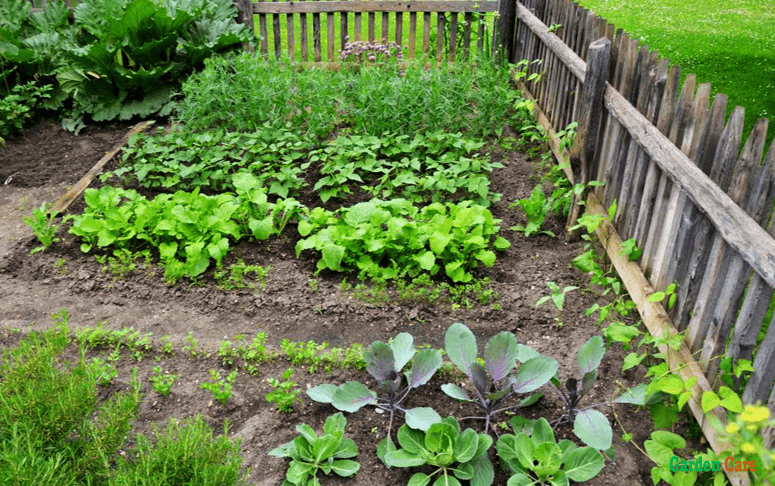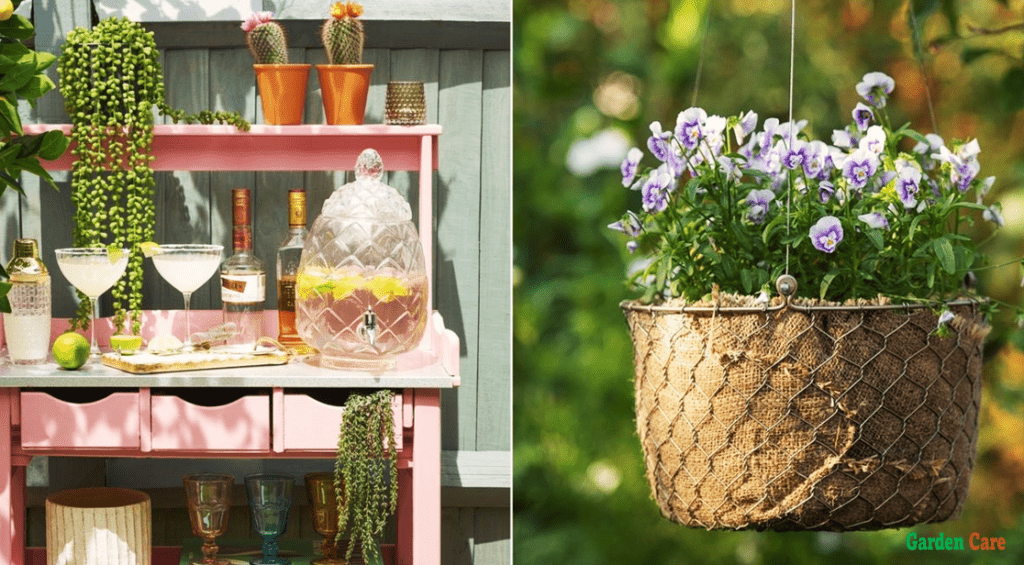For Small Vegetable Garden Ideas Pictures, explore these inspiring designs showcasing creative space utilization and vibrant plant arrangements. Discover clever techniques to maximize yield in limited areas while adding visual appeal to your garden.
A small vegetable garden can be a great addition to any home, providing a source of fresh produce and a rewarding hobby. However, lack of space can be a challenge when it comes to planning and organizing your garden. We will explore some small vegetable garden ideas through pictures, offering you inspiration on how to make the most of your limited gardening space.
From vertical gardens to raised beds, you’ll find innovative designs that allow you to grow a variety of vegetables in small areas. Whether you have a balcony, patio, or even just a windowsill, these ideas will help you create a thriving vegetable garden that suits your space.
[ez-toc]

2. Planning Your Small Vegetable Garden
Planning is the first crucial step to create a successful small vegetable garden. It allows you to make the most out of your available space and ensures that you choose the right vegetables for your garden. Follow these steps to plan your small vegetable garden effectively:
2.1 Assessing Your Space
Assessing your space is essential before you embark on your small vegetable garden journey. Take time to measure the area and understand the conditions of your space, such as how much sunlight it receives and whether it has any shade. Here are a few tips to help you assess your space:
- Measure your garden area with a tape measure to determine its size.
- Identify if there are any obstacles, such as trees or structures, that may affect sunlight or drainage.
- Observe how sunlight moves across your garden throughout the day. Take note of areas that receive full sun, partial shade, or full shade.
- Consider the soil quality and drainage of your space. If needed, amend the soil to create an optimal growing environment.
2.2 Choosing The Right Vegetables
Choosing the right vegetables for your small garden is crucial to ensure a bountiful harvest. Consider these factors when selecting your vegetable varieties:
- Growing season: Determine the length of your growing season and choose vegetables that can thrive within that timeframe.
- Space requirements: Opt for vegetables that are suitable for small spaces, such as compact or dwarf varieties.
- Complementary planting: Explore companion planting techniques to maximize the use of your space and boost crop yield.
- Preferred vegetables: Think about the vegetables your family enjoys eating the most. This way, you can prioritize growing these vegetables in your garden.
2.3 Designing Your Garden Layout
Designing a well-thought-out garden layout not only enhances the aesthetic appeal of your vegetable garden but also optimizes the use of space. Consider these tips when designing your garden layout:
- Plot on paper: Draw a scaled-down garden plan on paper to visualize the layout and arrangement of your vegetable beds. This will help you make better decisions and avoid overcrowding.
- Group vegetables: Arrange your vegetables based on their compatibility, lighting requirements, and watering needs. This grouping technique simplifies maintenance and ensures efficient use of resources.
- Succession planting: Plan for successive plantings to maximize your harvest throughout the growing season. As soon as one crop finishes, you can replant another in its place.
- Vertical gardening: Utilize vertical growing techniques, such as trellises or hanging baskets, to make the most of your vertical space and increase the variety of vegetables you can grow.
By carefully assessing your space, choosing the right vegetables, and designing an efficient layout, you’ll be well on your way to creating a productive and beautiful small vegetable garden. Stay tuned for more tips on maintenance, care, and harvesting in our upcoming blog posts!
3. Creative Ideas For Small Vegetable Gardens
Transform your small vegetable garden into a creative oasis with these inspiring ideas. Browse our collection of captivating pictures for a burst of inspiration.
Are you eager to start your own small vegetable garden but limited by space? Don’t worry, with some creativity and smart planning, even the tiniest of spaces can be transformed into thriving vegetable patches. In this article, we will explore three innovative ideas – vertical gardening, container gardening, and raised bed gardening – that will help you make the most of your small space and grow an abundance of fresh vegetables right at your doorstep.
3.1 Vertical Gardening
Vertical gardening is an excellent solution for small spaces as it takes advantage of the vertical area, allowing you to grow a wide range of vegetables without much horizontal space. By utilizing walls, fences, or trellises, you can create a stunning green wall that not only adds beauty to your garden but also maximizes your vegetable yield.
Here are some simple yet effective ways to incorporate vertical gardening in your small vegetable garden:
- Install wall-mounted planters or hanging baskets to grow herbs, leafy greens, or compact vegetables like cherry tomatoes.
- Attach trellises or mesh panels against walls or fences to support vining vegetables such as cucumbers, beans, or peas.
- Utilize tiered stands or shelving units to create multi-level gardens, allowing you to grow different vegetables in vertical layers.
With vertical gardening, you not only save valuable space but also create an eye-catching green oasis in your small vegetable garden.
3.2 Container Gardening
If you have limited outdoor space or lack a proper garden bed, container gardening is the perfect solution for you. This versatile method allows you to grow vegetables in various containers, including pots, planters, buckets, or even hanging baskets. With containers, you have the flexibility to move your garden around, making it ideal for apartment balconies, patios, or even windowsills.
Here are some tips to succeed with container gardening in your small vegetable garden:
- Choose the right-sized containers for your vegetables, ensuring they have proper drainage holes to prevent waterlogging.
- Fill the containers with nutrient-rich potting soil, ideally mixed with compost, to provide essential nutrients for healthy growth.
- Opt for compact varieties or dwarf varieties of vegetables, as they adapt well to container gardening and require less space.
- Place your containers strategically to optimize sunlight exposure, ensuring your vegetables receive at least 6 hours of direct sunlight each day.
- Water your container plants regularly, as they tend to dry out more quickly than plants in the ground.
Container gardening not only allows you to grow a variety of vegetables in a limited space but also adds a decorative touch to your small vegetable garden.
3.3 Raised Bed Gardening
Raised bed gardening is another fantastic option for small vegetable gardens, especially if you want to control the soil quality, drainage, and weed growth. By creating raised beds, you can separate your vegetable plot from the rest of the garden, making it easier to maintain and providing a more concentrated growing area for your plants.
Follow these steps to set up a successful raised bed garden:
- Choose a suitable location that receives ample sunlight and has easy access to water.
- Construct the raised bed using rot-resistant materials like cedar or composite wood, ensuring it is sturdy and at a height that allows easy access for tending to your plants.
- Fill the raised bed with a balanced soil mixture, combining garden soil, compost, and organic matter.
- Plan your planting layout, utilizing techniques like square foot gardening or companion planting for maximum productivity.
- Maintain your raised bed garden by keeping it weed-free, watering regularly, and providing necessary support for taller vegetables.
Raised bed gardening not only provides excellent drainage and soil control but also creates a visually appealing focal point in your small vegetable garden.
4. Maintaining Your Small Vegetable Garden
Now that you have set up your small vegetable garden and started growing your favorite vegetables, it’s important to provide the essential care and maintenance they need. Proper maintenance is crucial to ensuring healthy growth and bountiful harvest. In this section, we will discuss three key aspects of maintaining your small vegetable garden: watering and irrigation, pest control, and fertilizing and composting.
4.1 Watering And Irrigation
Watering is the lifeblood of any garden, and your small vegetable garden is no exception. Providing the right amount of water at the right time is essential for optimum plant health. Here are a few tips to help you water your vegetable garden effectively:
- Water your plants at the base, near the ground, rather than from above. This reduces the risk of fungal diseases and helps the roots absorb water efficiently.
- If possible, install a drip irrigation system or soaker hoses. This makes watering easier and more efficient, as it delivers water directly to the roots.
- Check the moisture level of the soil regularly. Stick your finger about an inch deep into the soil. If it feels dry, it’s time to water.
- Water your plants deeply and infrequently. This encourages deeper root growth and makes your plants more resilient to drought.
- Water in the early morning or late afternoon to minimize evaporation and ensure proper absorption.
4.2 Pest Control
Keeping pests at bay is an ongoing battle in any garden, but with the right strategies, you can minimize their impact on your small vegetable garden. Here are some pest control tips:
- Inspect your plants regularly for signs of pests such as chewed leaves, holes, or discoloration.
- Remove any pests you find manually, such as aphids, caterpillars, or snails.
- Encourage beneficial insects like ladybugs, lacewings, and praying mantises, as they prey on garden pests.
- Consider using natural pest repellents such as neem oil, garlic spray, or homemade organic solutions.
- Practice crop rotation each year to disrupt the life cycle of pests and reduce the risk of infestations.
4.3 Fertilizing And Composting
Providing your small vegetable garden with sufficient nutrients is vital for ensuring healthy plant growth and high yields. Here are some tips for fertilizing and composting:
- Add organic matter to your soil before planting. This can include compost, aged manure, or shredded leaves, which improve soil structure and fertility.
- Use organic fertilizers such as fish emulsion, seaweed extract, or compost tea to provide essential nutrients to your plants.
- Fertilize your vegetables according to their specific needs. Leafy greens may require more nitrogen, while fruiting vegetables like tomatoes and peppers may benefit from a balanced fertilizer.
- Consider starting a compost pile to recycle kitchen scraps and garden waste into nutrient-rich compost. Regularly adding compost to your garden beds enhances soil fertility over time.
- Avoid over-fertilizing, as it can lead to excessive vegetative growth or nutrient imbalances. Always follow the recommended application rates.
Frequently Asked Questions For Small Vegetable Garden Ideas Pictures
Faq 1: Which Vegetables Grow Well In Small Gardens?
In a small garden, you can grow a variety of veggies including lettuce, tomatoes, radishes, and herbs like basil and parsley.
Faq 2: How Can I Maximize Space In A Small Vegetable Garden?
Make the most of limited space by using vertical gardening techniques, employing raised beds, and interplanting compatible vegetables.
Faq 3: What Are Some Creative Ideas For Small Vegetable Gardens?
Consider container gardening, using hanging baskets, or creating a herb spiral for a visually appealing and productive small vegetable garden.
Conclusion
These small vegetable garden ideas presented in pictures demonstrate the creative ways in which you can maximize space and grow your own fresh produce. By utilizing vertical gardening techniques, container gardens, and interplanting, you can create a thriving vegetable garden in even the smallest of spaces.
With these ideas, you can enjoy the satisfaction of harvesting your own homegrown vegetables while adding beauty to your surroundings. Start planning your small vegetable garden today and reap the rewards of a sustainable and fulfilling hobby.




